While the March-May period kicks off vibrance in the year, coffee competitions also sow seeds of passion and professionalism around the world, with a flurry of enthusiasm one after another.
The 2024 World Brewers Cup (2024WBrC) has wrapped up in Chicago, and the 2024 World Barista Championship (2024WBC) has concluded in Busan. Even at the end of this competition season, coffee lovers’ passion is still heating up. Just as fashionistas discuss every single look after Fashion Weeks, coffee enthusiasts are now debating contestants’ coffee beans, utensils, and concepts, with their shopping lists growing longer and longer…
In this article, let’s discuss products that went viral thanks to contestants in the 2024 season. After examining their presentations, we can identify numerous fresh industry trends within the selections of some finalists!
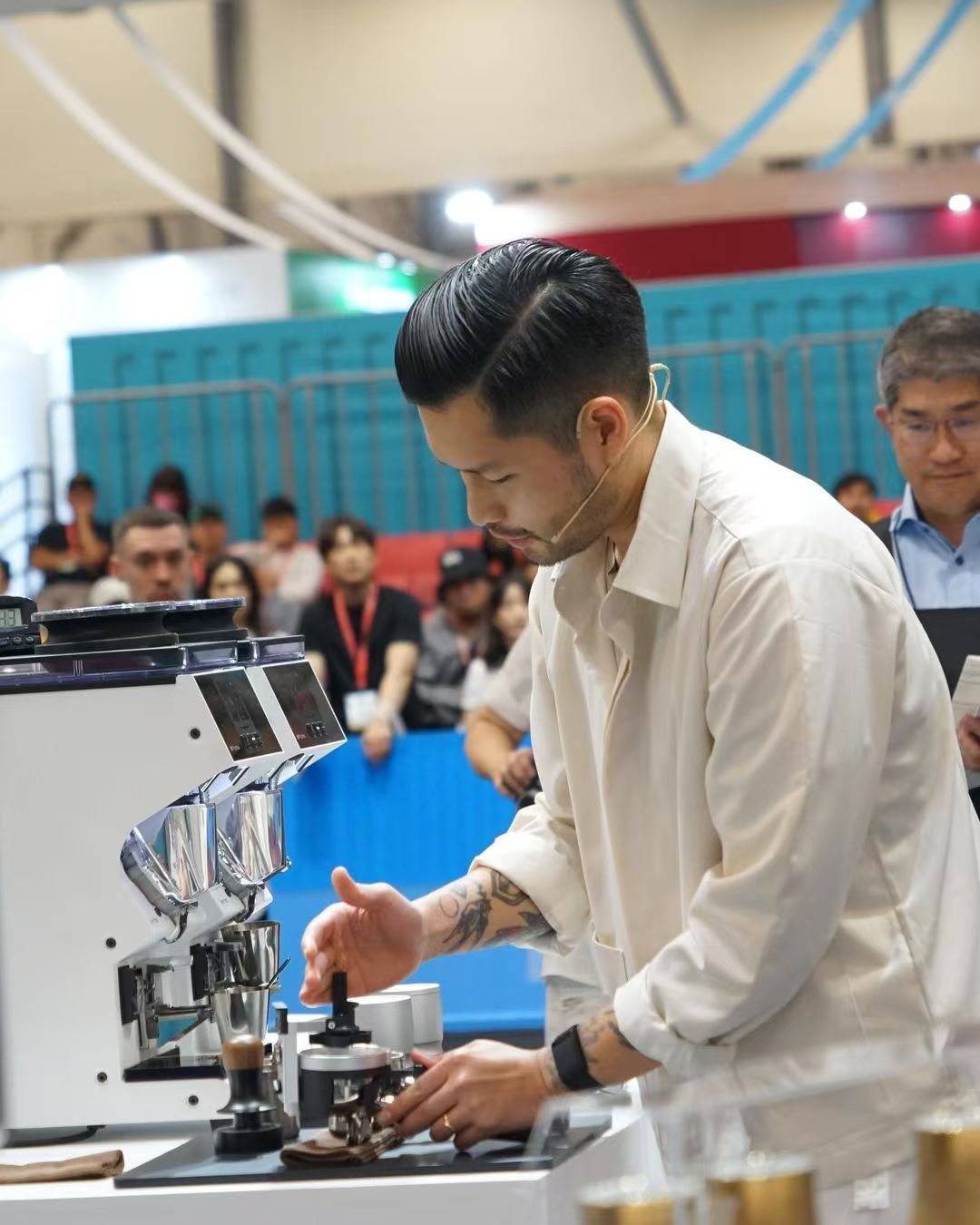
Mikael Jasin
Champions’ Highlights of Stability: Maximizing Even Extraction
Even extraction is essential for brewing a good cup of coffee, and proper distribution plays a crucial role.
The Weiss Distribution Technique (WDT), developed by John Weiss, is increasingly adopted by cafes and home baristas alike. In essence, the technique involves inserting needles deep into espresso grounds and stirring to break down clumps that are not visible on the surface, ensuring uniform distribution.

At the 2023WBC, Barista Hustle’s AutoComb proved indispensable, serving as the “right-hand man” for 14 national champions. This year, it was a must-have for every contestant, despite the tight 15-minute timeframe, with each carefully spinning the tool in their baskets.
As Barista Hustle introduced, each comb is equipped with 12 fine needles only 0.25mm in diameter. The visible design allows for flexible observation of the grounds, making it an ideal choice for ensuring even distribution.
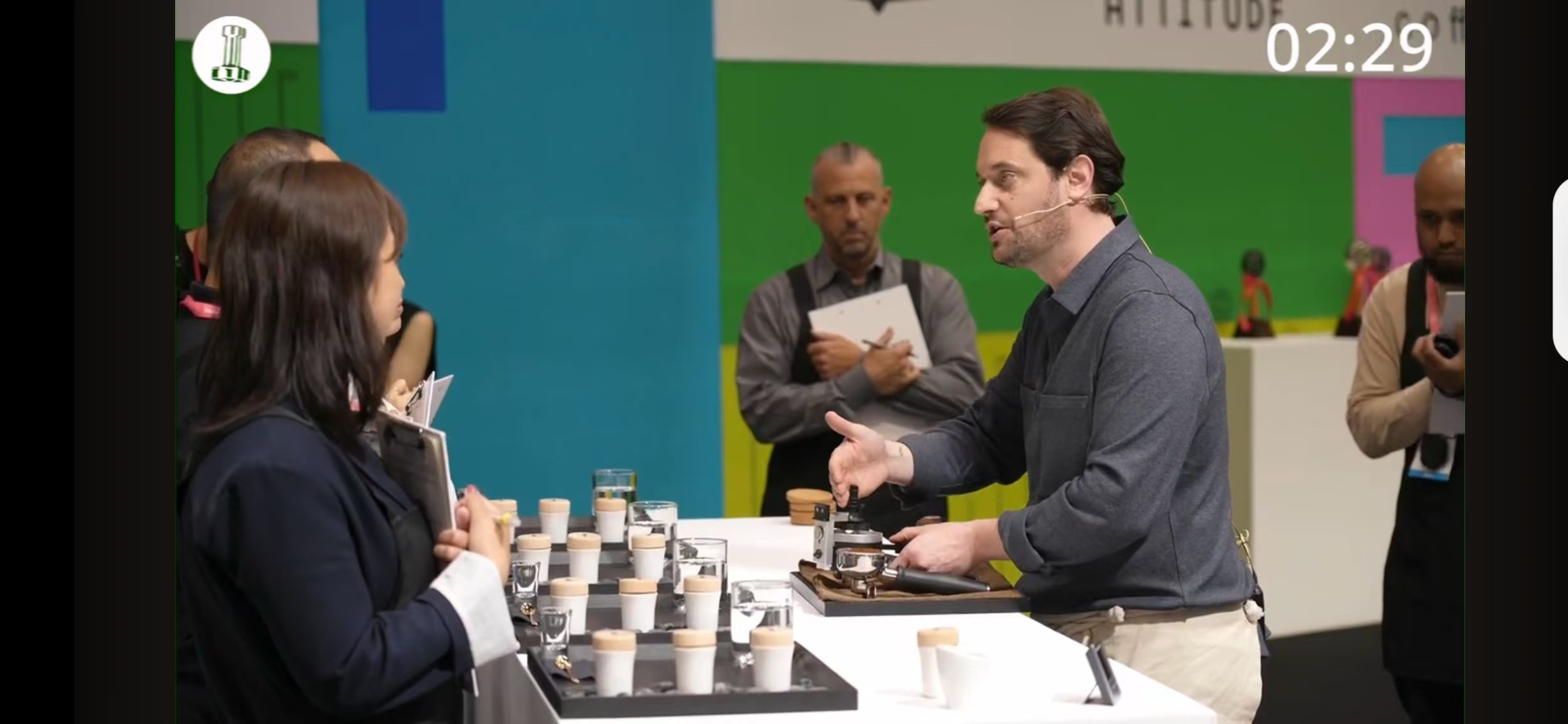
Mathieu Theis
During the preliminaries, Mathieu Theis, owner of MAME, meticulously rotated his AutoComb while explaining his technique to the judges. His attention to detail produced a delicate brew, securing him eighth place, despite exceeding the time limit by 16 seconds.
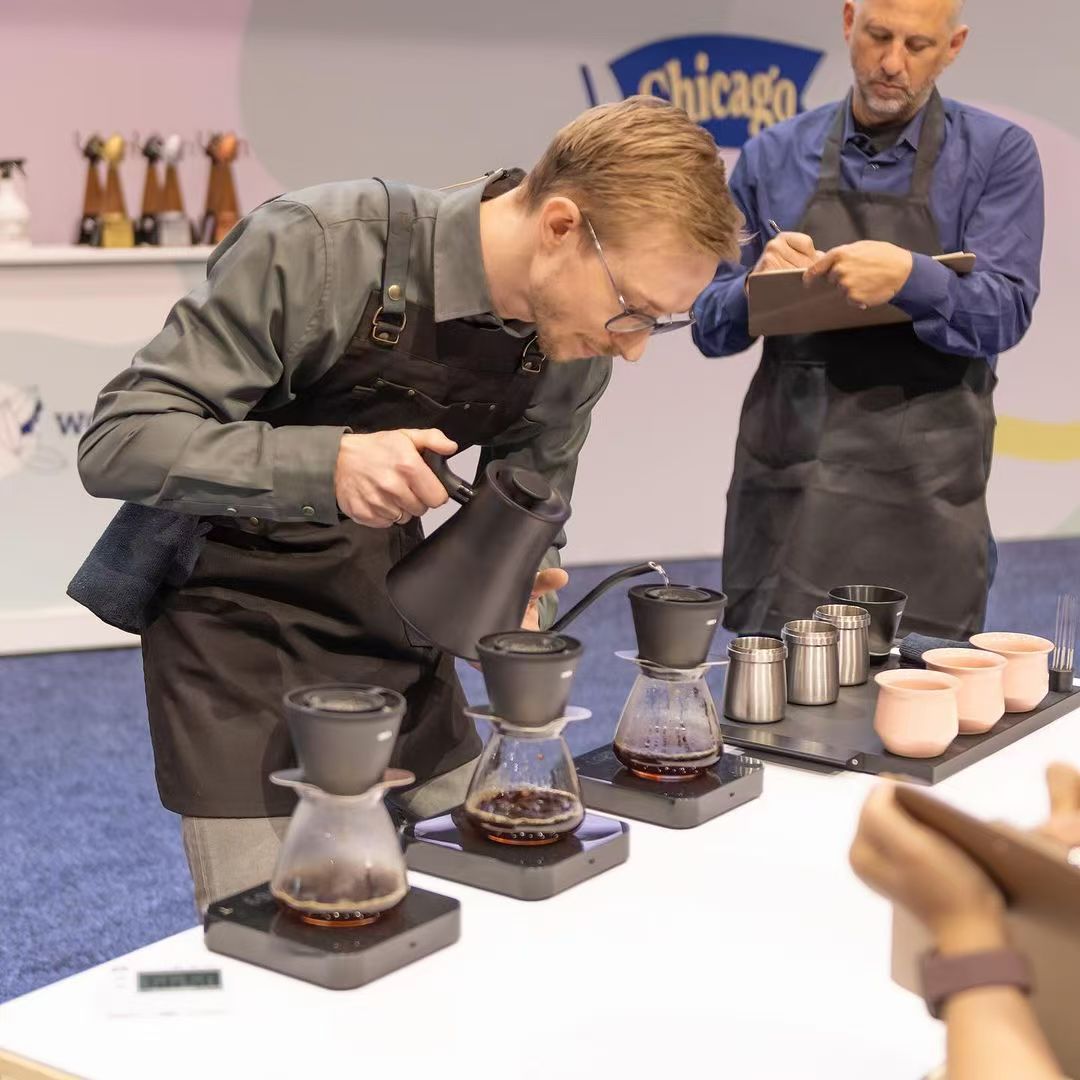
Martin Wölfl

Martin Wölfl from Austria, the 2024WBrC champion, utilized the WDT method to achieve even extraction, enhancing the coffee’s sweetness. Additionally, he placed a Melodrip on the filter cup, ensuring water evenly trickled through shower-head-like holes into the grounds. Combined with a four-stage extraction process, his final presentation impressed with its smooth texture and balanced flavor.
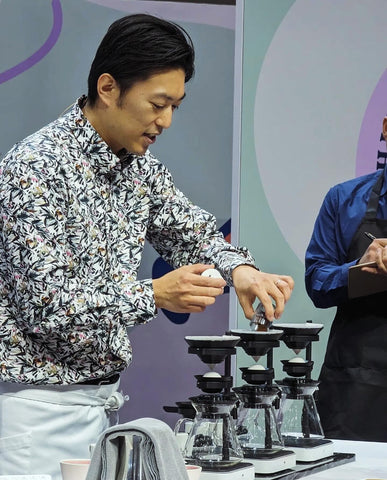
Wataru Lidaka

Wataru Iidaka from Japan, the brewing runner-up, also employed the Melodrip. Unlike Wölfl, he positioned it on the mouth of the serving pot to cushion the coffee before it entered, allowing the liquid to interact with air, thereby enhancing the flavor and aroma.
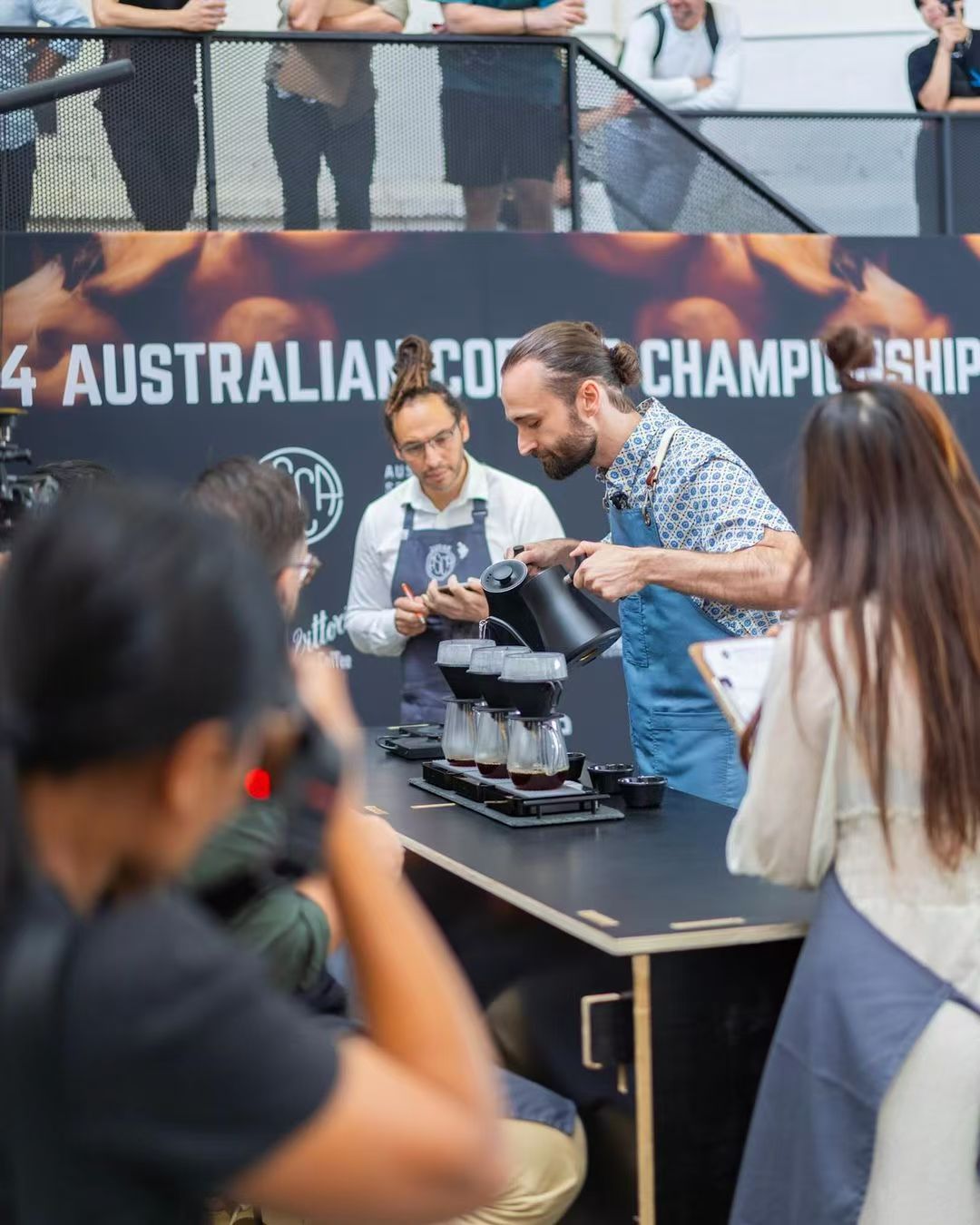
Tom Hutchins

Even extraction magic can also be achieved with gadgets like Hario’s V60 Magic Hat. Tom Hutchins from Australia used the metal version of the V60 dripper with the Magic Hat to fully extract the complex, symphony-like flavors of a Colombian blend.
The Magic Hat features differently sized holes on its interior and exterior rings for varying drip rates. Hutchins used the interior ring’s holes to quickly saturate the grounds at a flow rate of 8 grams per second. Once the interior ring was full, he poured water onto the exterior ring at a slower 4 grams per second to maintain the powder layer’s height and control agitation. Additionally, Hutchins simultaneously poured water at 95°C and 85°C into the Magic Hat, achieving a lower overall temperature that extracted grape-like sweetness and a juicy texture.
Black Technology Is Science, Not a Lucky Hunch
In 2023, the little magic ball Paragon was developed by Australian coffee champion Sasa Sestic and Chahan, an expert from the Swiss Coffee Excellence Center. It was launched under Sasa’s futuristic utensil brand “Nucleus Coffee Tools”, which is passionate about innovation in excellent coffee.
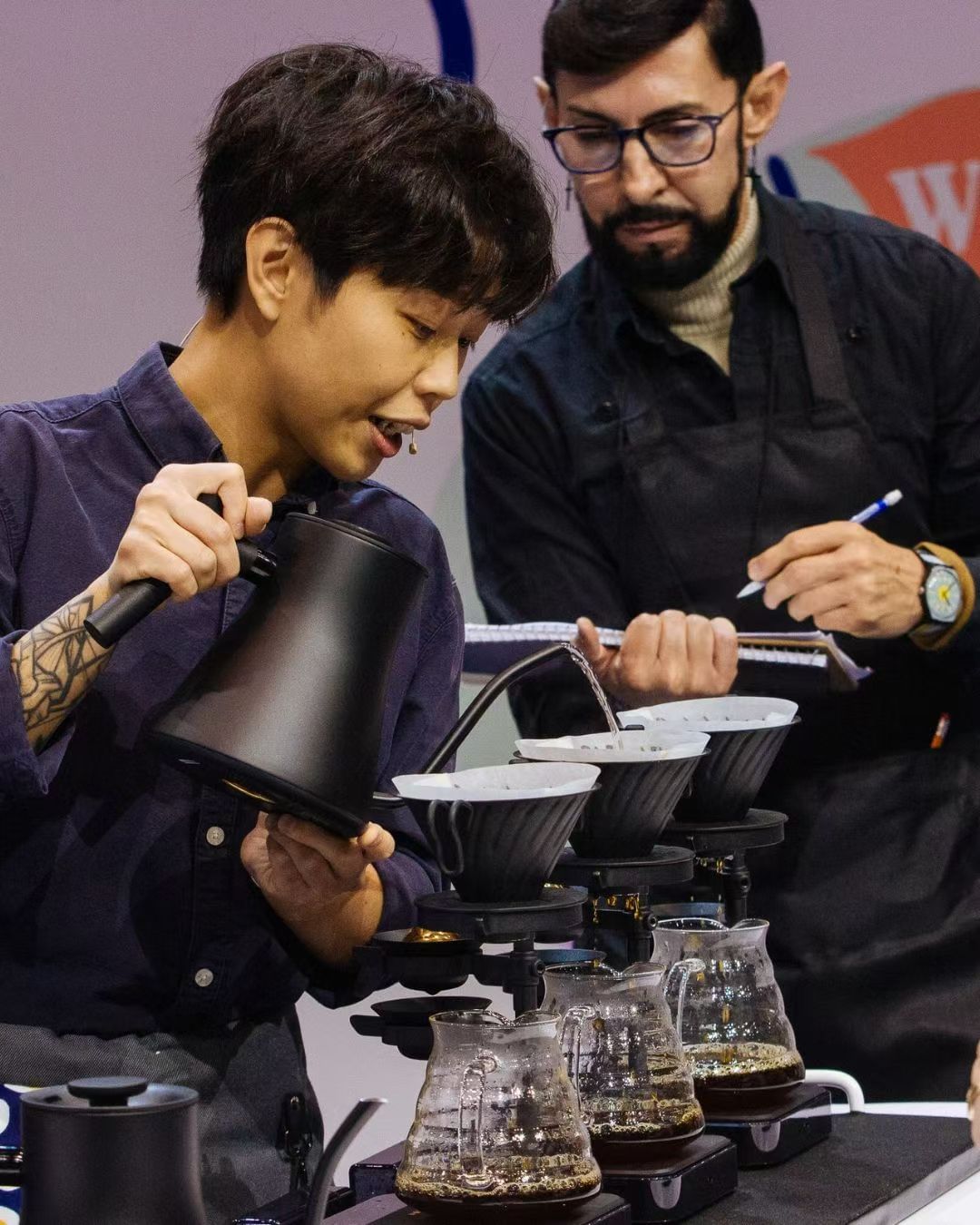
Suki Ma
At the 2024WBrC, Suki Ma from Rose Coffee Roasters in Switzerland delivered a touching presentation. In a post-competition interview, she candidly expressed that competing is a new learning journey to study techniques, explore coffee, and share the efforts made by producers. To delve deeper into the relationship between coffee and science, she incorporated Paragon into her brewing. “Paragon helps me preserve over 40% of the volatile aromatic compounds and amplifies them in coffee. It’s incredible!”


Paragon’s metal casing contains a frozen solution. Simply place it in the freezer (below -5°C) before use, and it will remain in optimal condition for up to 10 minutes after removal. Designed to minimize aroma loss during brewing, Paragon is compatible with both pour-over and espresso methods, with no usage barriers. This little ice ball helped both Honoka Kawashima (New Zealand) and Wataru Iidaka (Japan) achieve high scores.
Two new “ultra” technologies have sparked our imagination for the future of coffee.
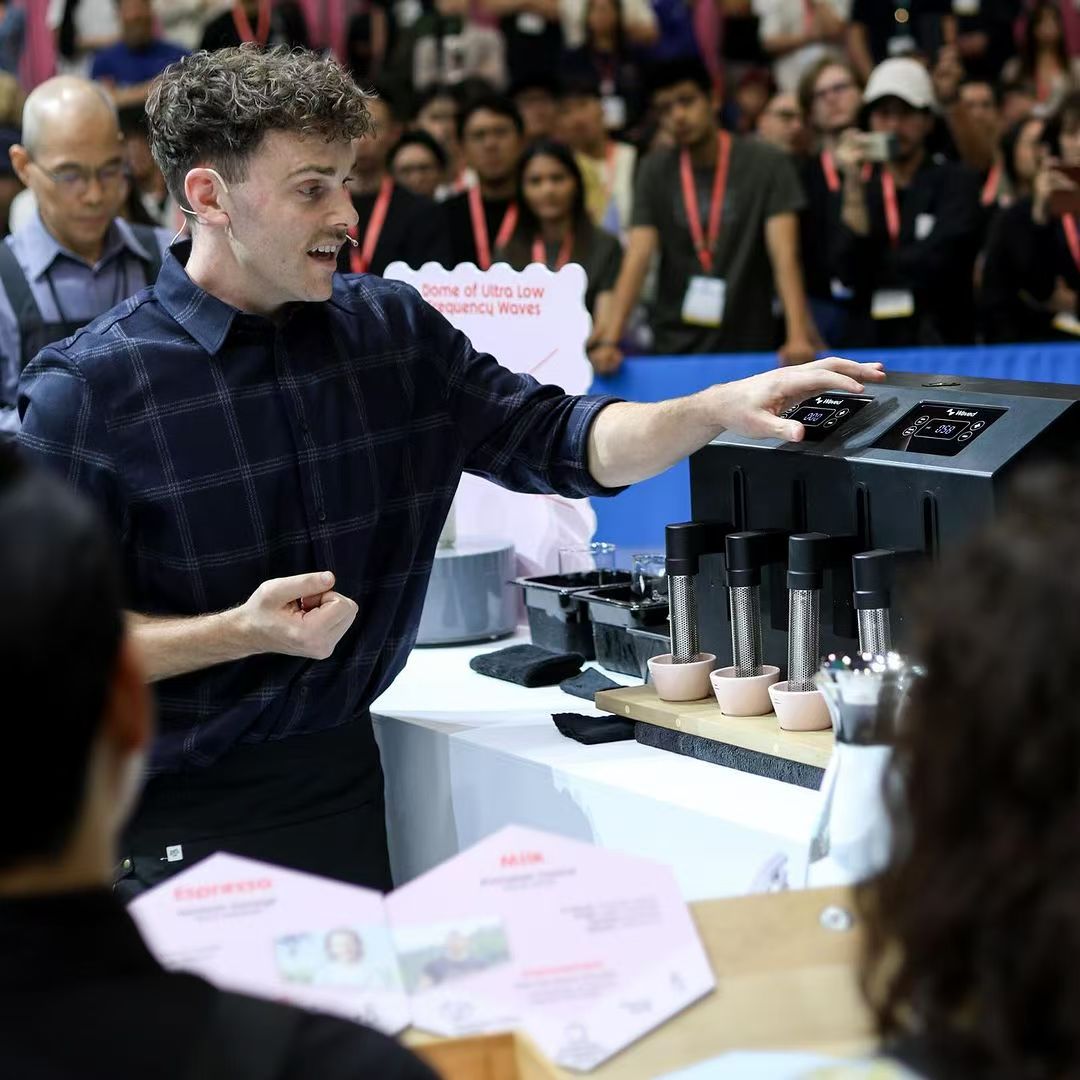
Jack Simpson

WBC runner-up Jack Simpson (Australia) introduced Ultra Low Frequency Electromagnetic Waves, originally used in nautical applications, to the coffee bar. In just two seconds, the 500Hz electromagnetic waves altered the molecular structure of coffee, enhancing sweetness and highlighting blood orange flavors in his beverage.
Even more astonishingly, these waves can sweeten coffee berries and transform milk into a creamy smoothie. Processed with the waves for two hours, the fat globules in milk combine, giving it a taste similar to melted ice cream.
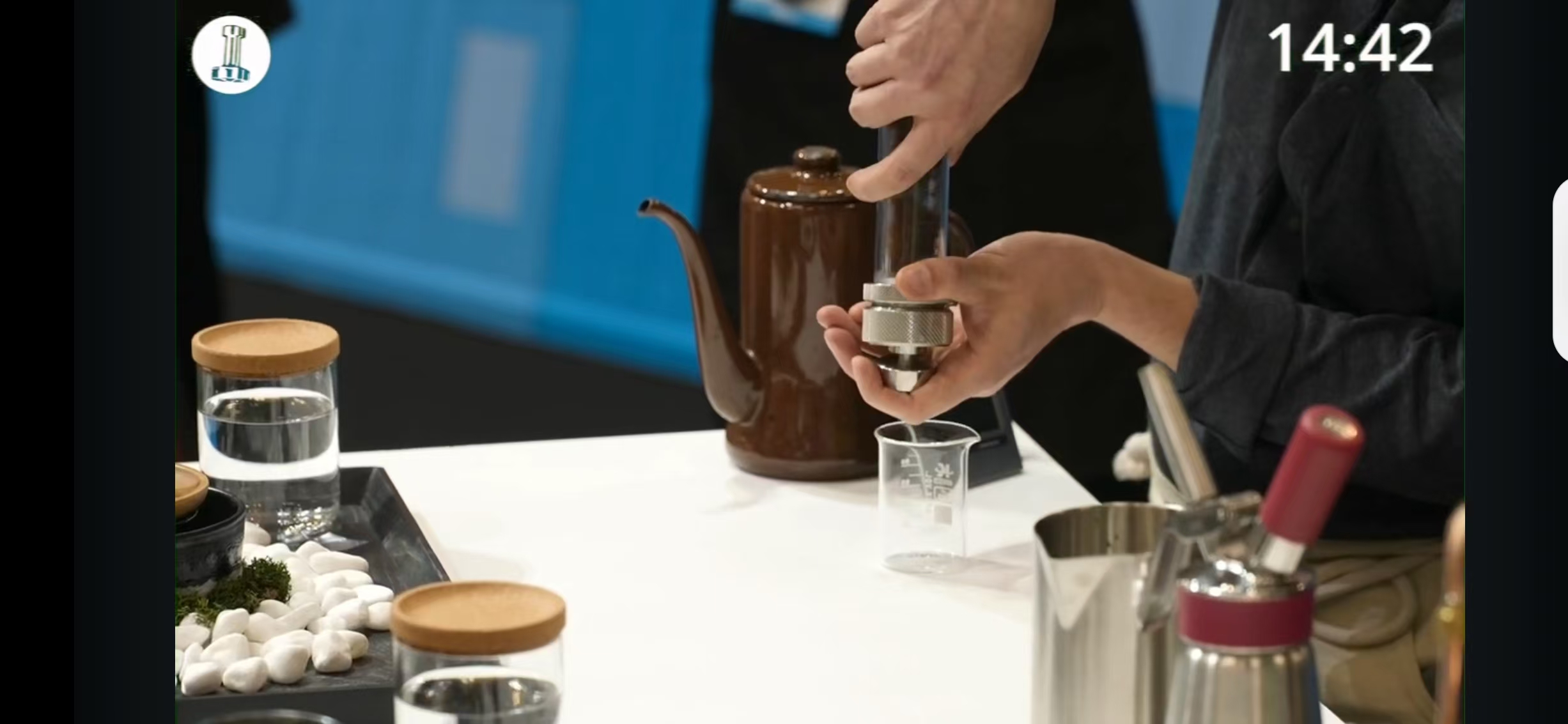
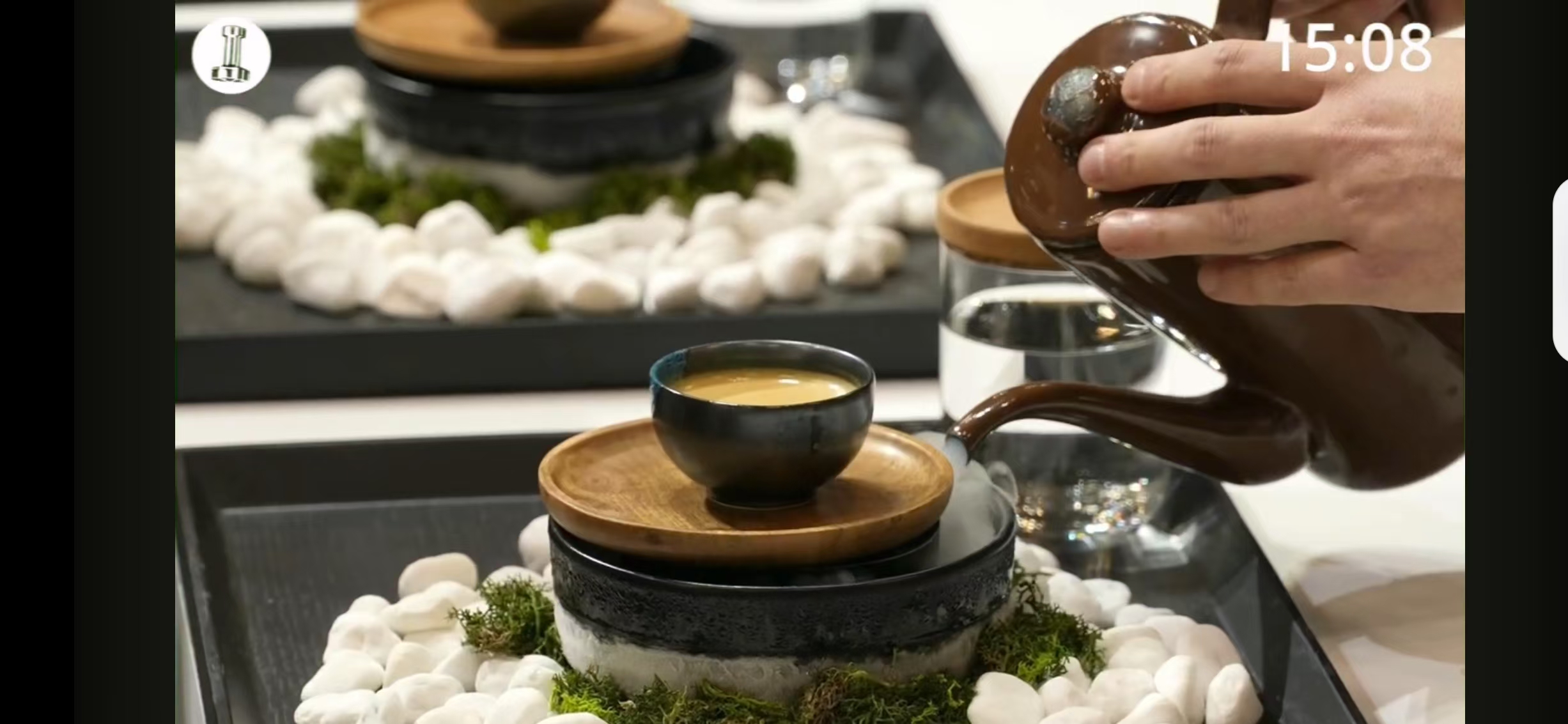
Mathieu Theis utilized supercritical carbon dioxide with ultra solvency to extract orange blossom aromas from coffee grounds, culminating in his climactic presentation. Surrounded by liquid carbon dioxide, the specialty drink appeared mysterious, elevating the drinking experience to new heights.
Does Rapid, Steady Pour-Over Represent a New Trend?
In this year’s brewing competition, contestants introduced a plethora of innovations. Functions varied, yet surprisingly, features converged.
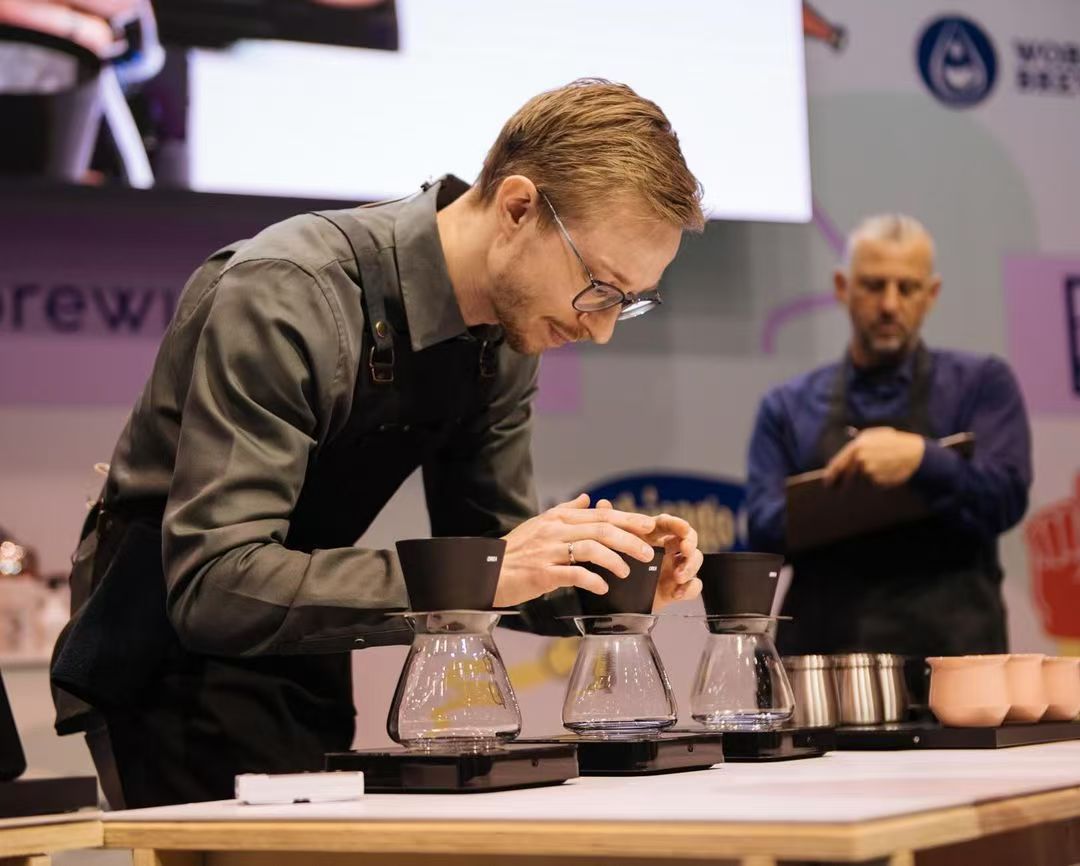
Martin Wölfl
Champion Martin Wölfl selected the OREA V4 filter cup as the fifth innovation in his presentation. This latest version of OREA can accommodate four types of bases, including flat bottom and conical. Wölfl used the fast base for even, efficient extraction, resulting in a brighter flavor profile.

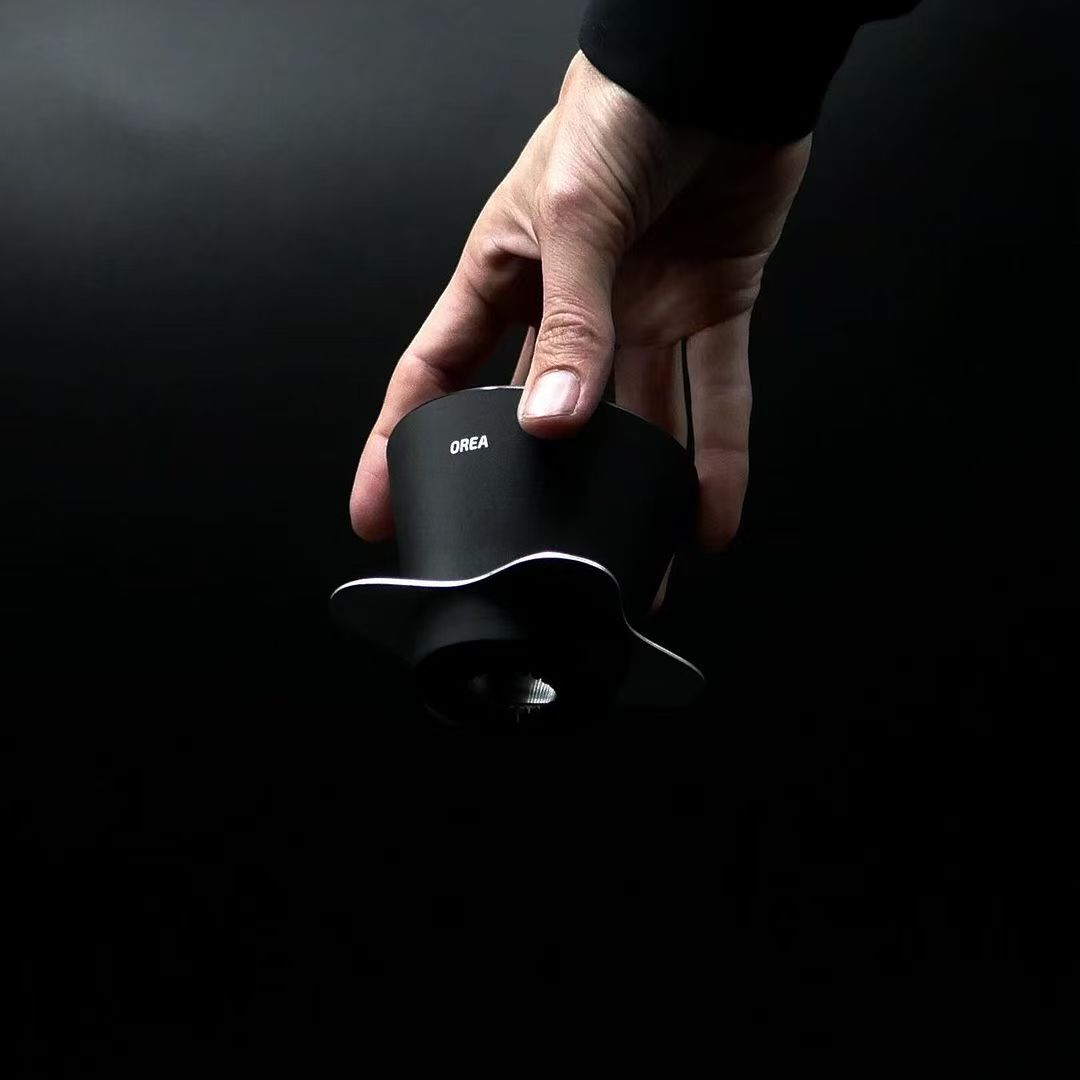
OREA V4 Dripper
The British coffee utensil brand OREA is renowned for its experimental spirit, often likened to a practical and elegant version of Balenciaga in the coffee world. Founded in 2021, the company has continually upgraded the design of its filter cups, from structure to materials. The V4 is slated for release in June, and its debut alongside the champion serves as an exciting teaser. With details still under wraps, anticipation grows for the versatility this filter cup promises.

UFO dripper
Runner-up Wataru Iidaka introduced the brand-new UFO V1 filter cup, which sold out on the official website immediately after the competition—a testament to contestants’ advertising impact. This filter cup delivers clean flavors and pleasant acidity akin to its conical counterparts. However, its unprecedented 80° design creates a gentler angle for finer grounds, ensuring extended contact time with water. Additionally, the concave air channel design balances upper and lower pressure differences to prevent clogging, comprehensively enhancing extraction stability.
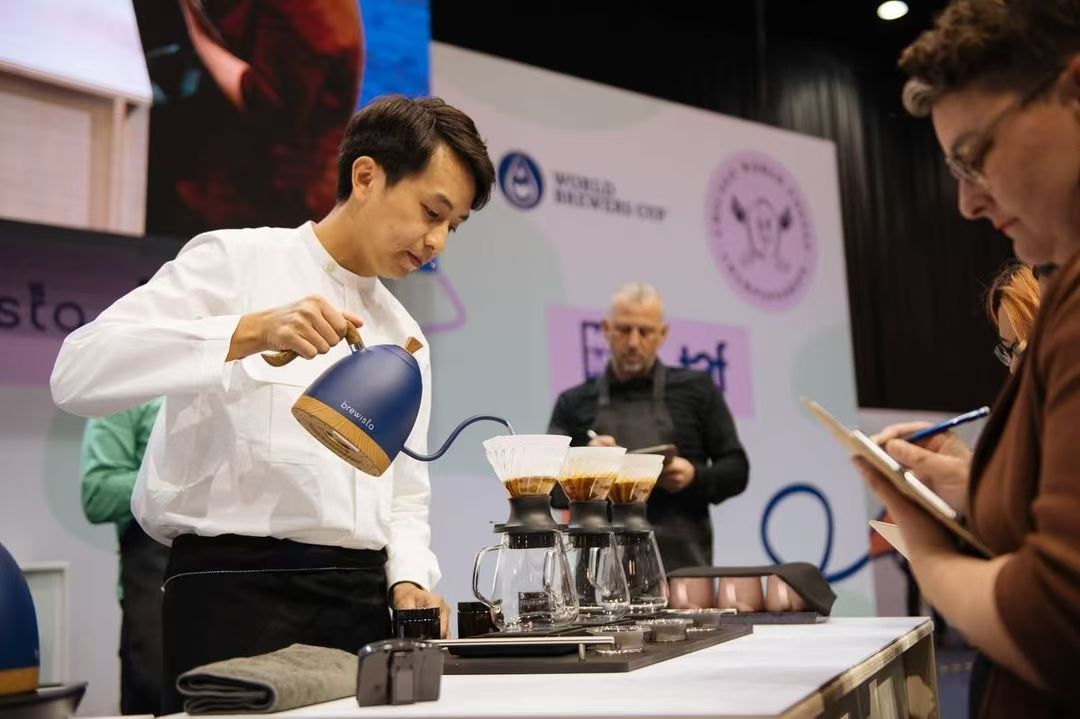
Ryan Wibawa
Ryan Wibawa from Indonesia, the second runner-up, utilized the Hario Switch, a more conventional filter cup with a strong presence in competitions. Its standout feature lies in its flexible switch between filtration and steeping, ideal for relaxed brewing and experimentation with variable parameters—a practical and intriguing choice! Wibawa adhered to the principle of even extraction, employing double steeping and two temperatures (86°C and 92°C) to separately extract intensified sweetness, flavor, and aftertaste.
Interestingly, the top three brewers all employed the rapid filter paper from the Spanish brand Sibarist. Martin Wölfl highlighted that faster extraction enabled him to use a finer grind without fear of over-extraction, thus accentuating the red fruit flavors of Geisha. Ryan Wibawa emphasized the filter paper’s cleanliness as its paramount feature. Compared to others, it boasts a flow rate 15%-40% higher, allowing ample room to explore diverse flavors without clogging concerns. Wataru Iidaka utilized the tailor-made UFO edition, soon to be available.

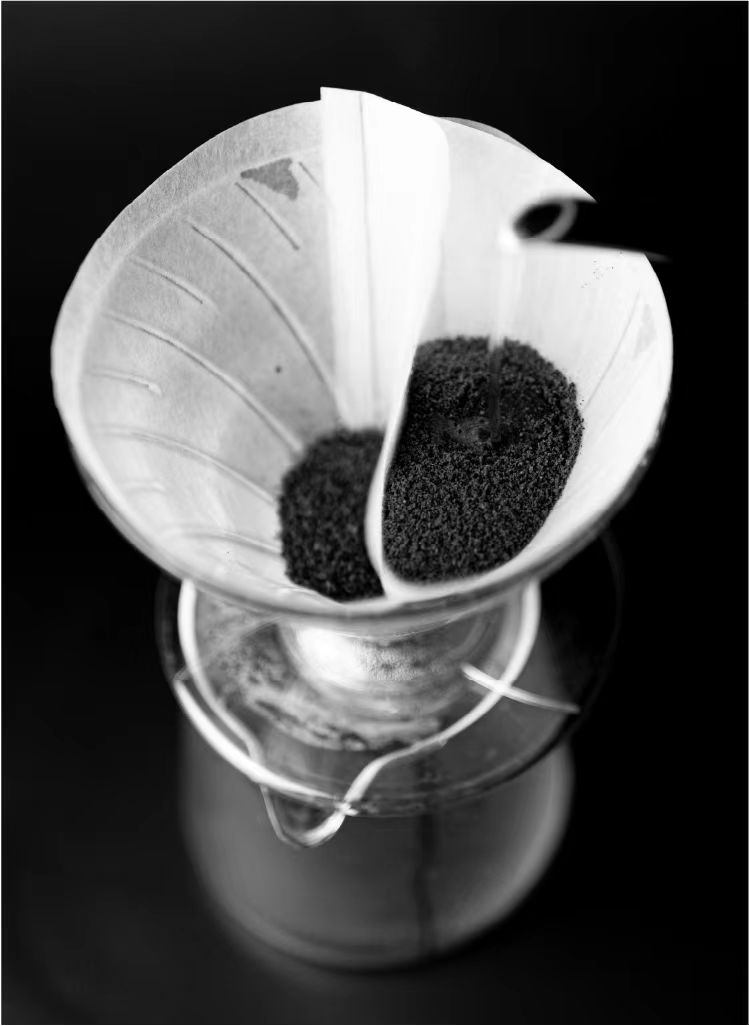
Sibarist
With its swift flow speed, enhanced extraction rates, and versatile range, Sibarist rightfully earns the title of “Master of Coffee Filter Paper”! The brand recently unveiled DUAL CHAMBER, capable of brewing two types of coffee in one filter cup, enabling blending based on desired flavor profiles—a trend aligned with current blending practices.
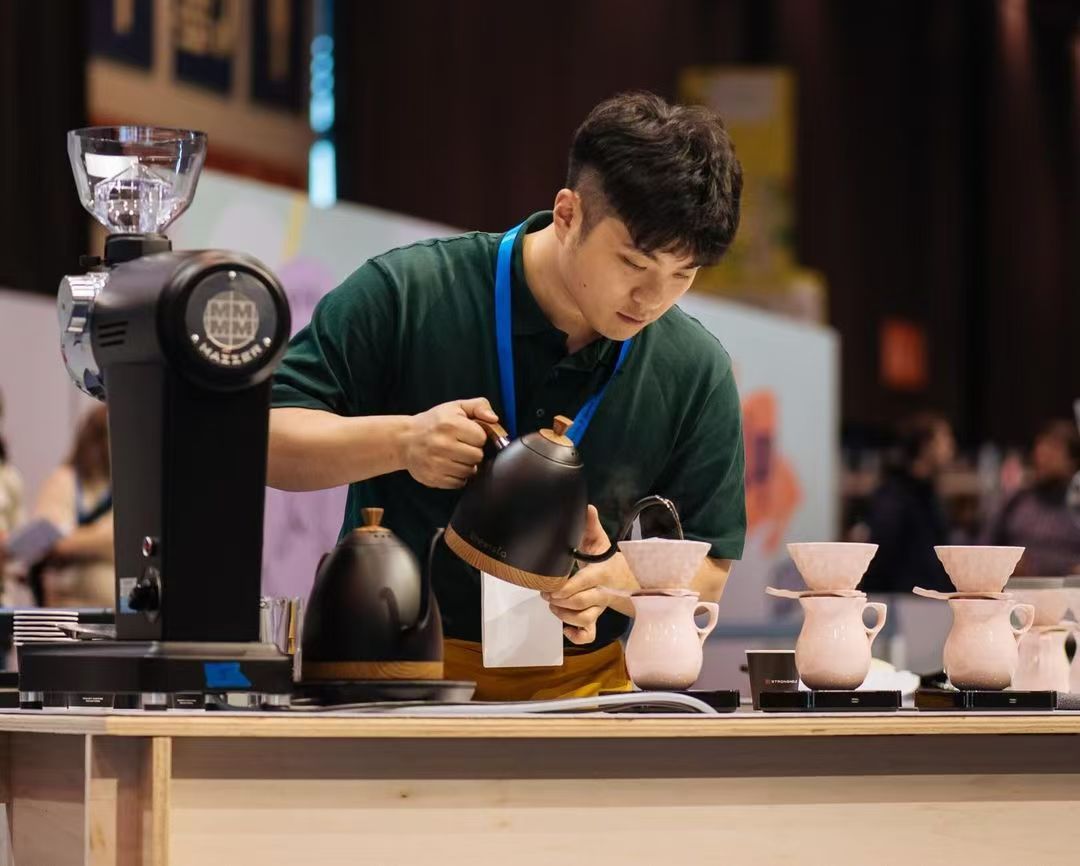
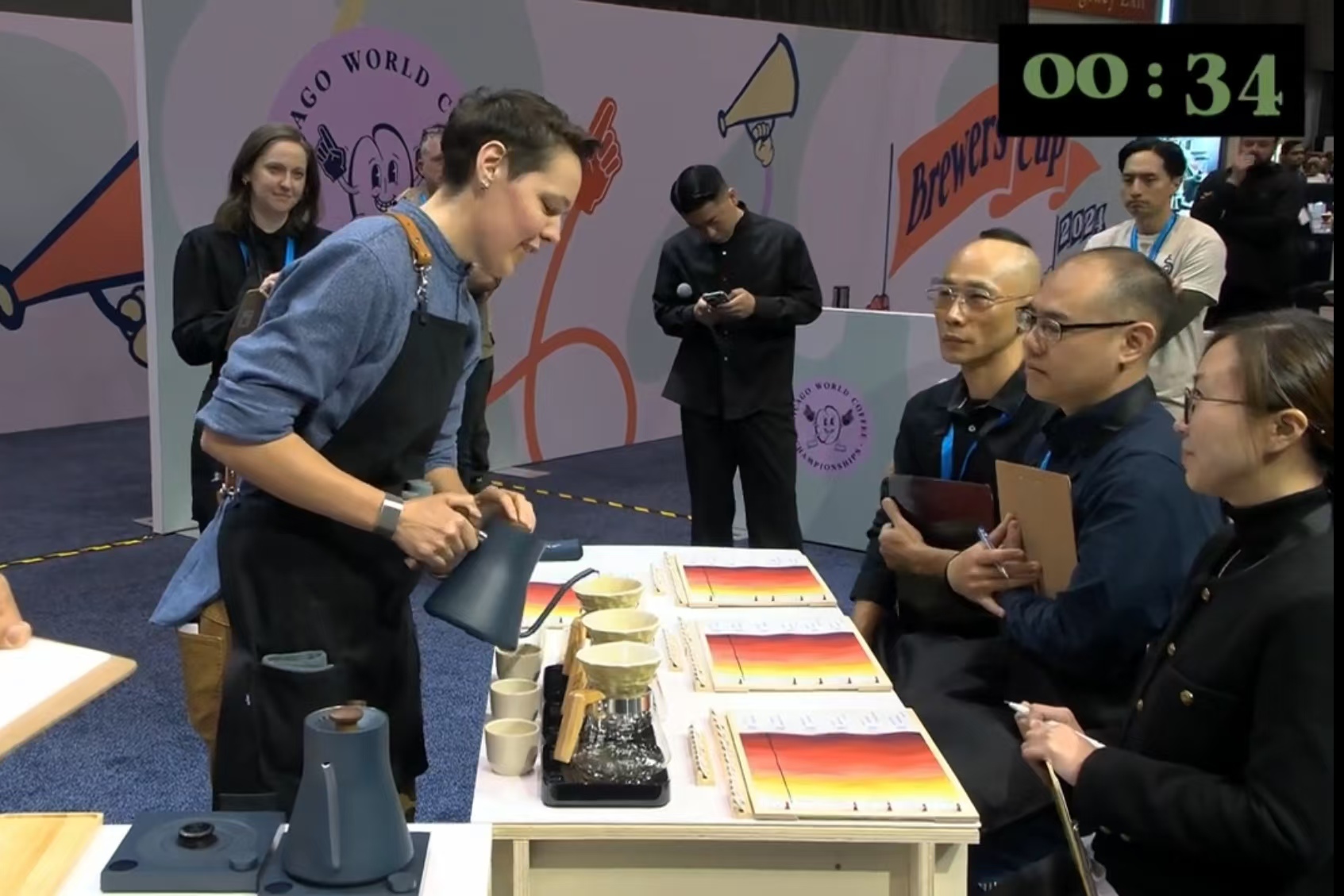
Notably, the Dragon Scale 62 and Shanwen 62 drippers from Taiwan’s DragonFly Design Center also made waves in global competitions, utilized by Kim Dong Min (South Korea), Aga (Poland), and Jaco Chu (Hong Kong, China). Their unique 62° incline and original groove design ensured clean extraction and rich coffee flavors.
Right Cup Makes More Delicacy!
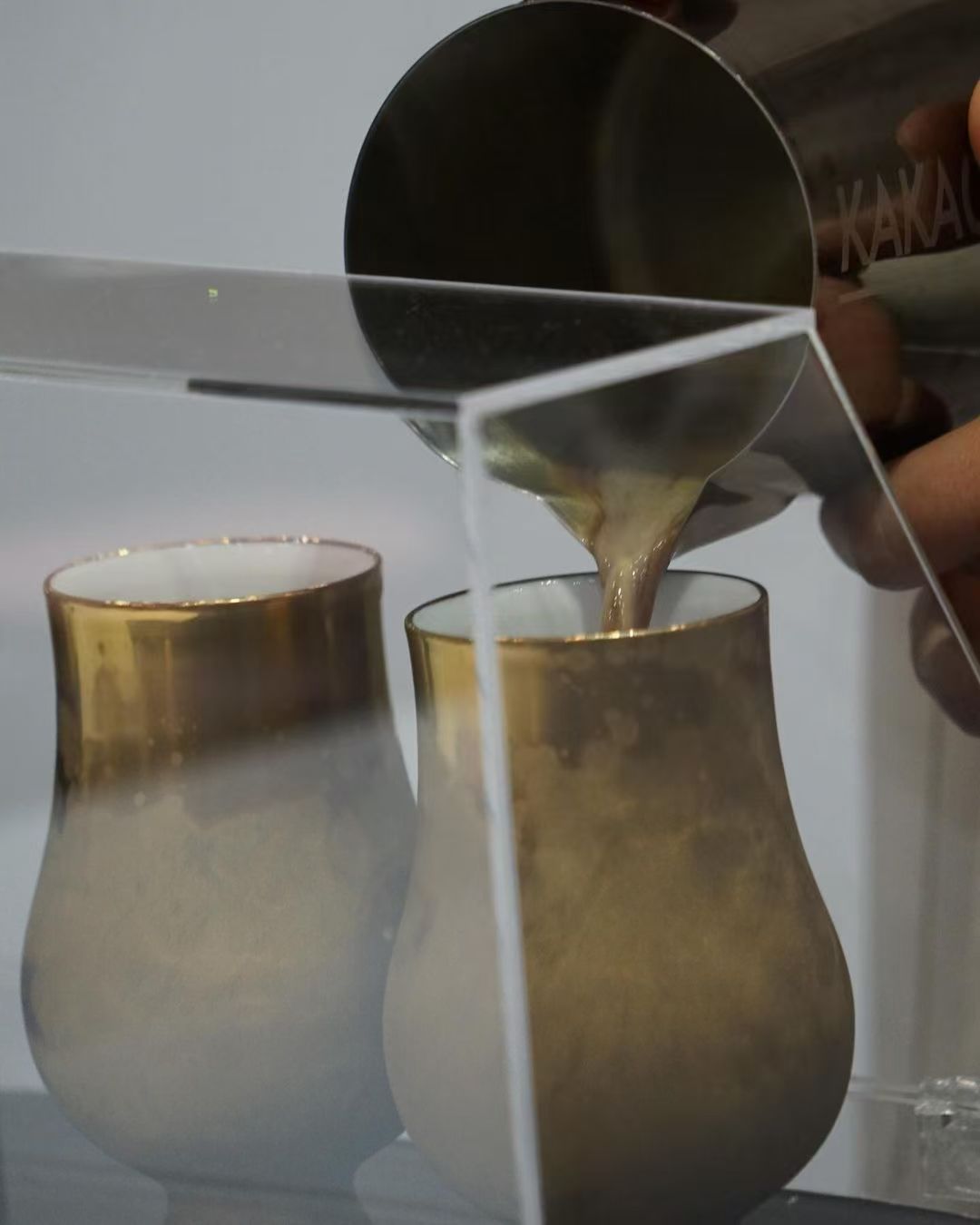
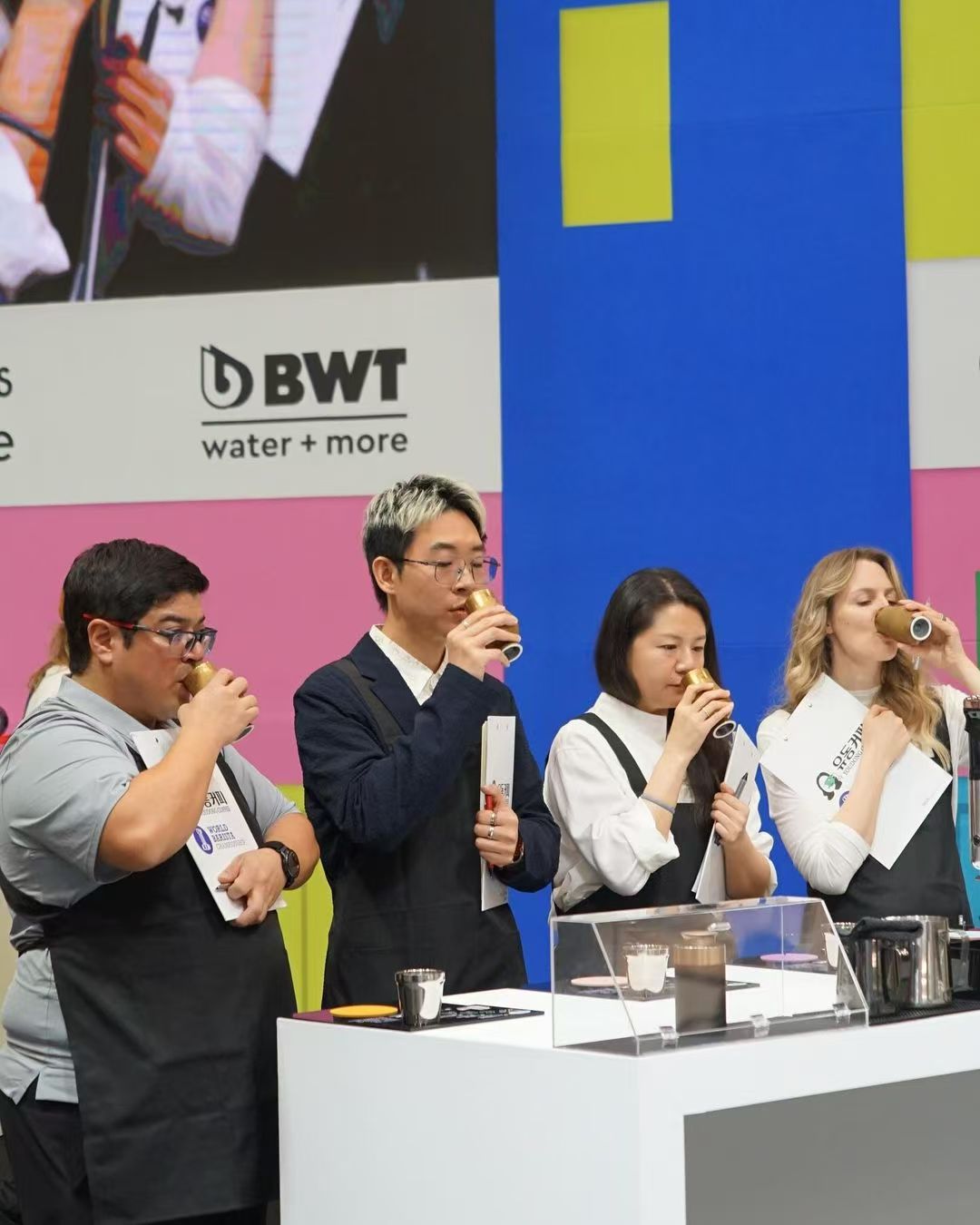
WBC Champion Mikael Jasin infused his 15-minute presentation with a theme of positive meditation. Even the specialty cups he used had an antique shape. Unpacking them felt like a small ritual, as if they contained magic to delight both the heart and the taste buds.
He guided the judges to experience the cups with their hands and lips, contrasting the rough bottoms with the smooth rims. This demonstration aimed to illustrate that the beauty of smoothness can only be fully appreciated in contrast with roughness.

Mathieu Theis showcased his customized special cups resembling Jianzhan, ancient Chinese stoneware ceramics. He encouraged the judges to sip from the blue part of the rim, seeking a more enjoyable coffee taste enhanced by the cup’s smoothness.
Jack Simpson introduced Ni Wares, a new brand of coffee cups. He utilized the Toto espresso cups with varying thicknesses on each side of the rim, enhancing the juiciness of Geisha coffee when served from the thinner side.

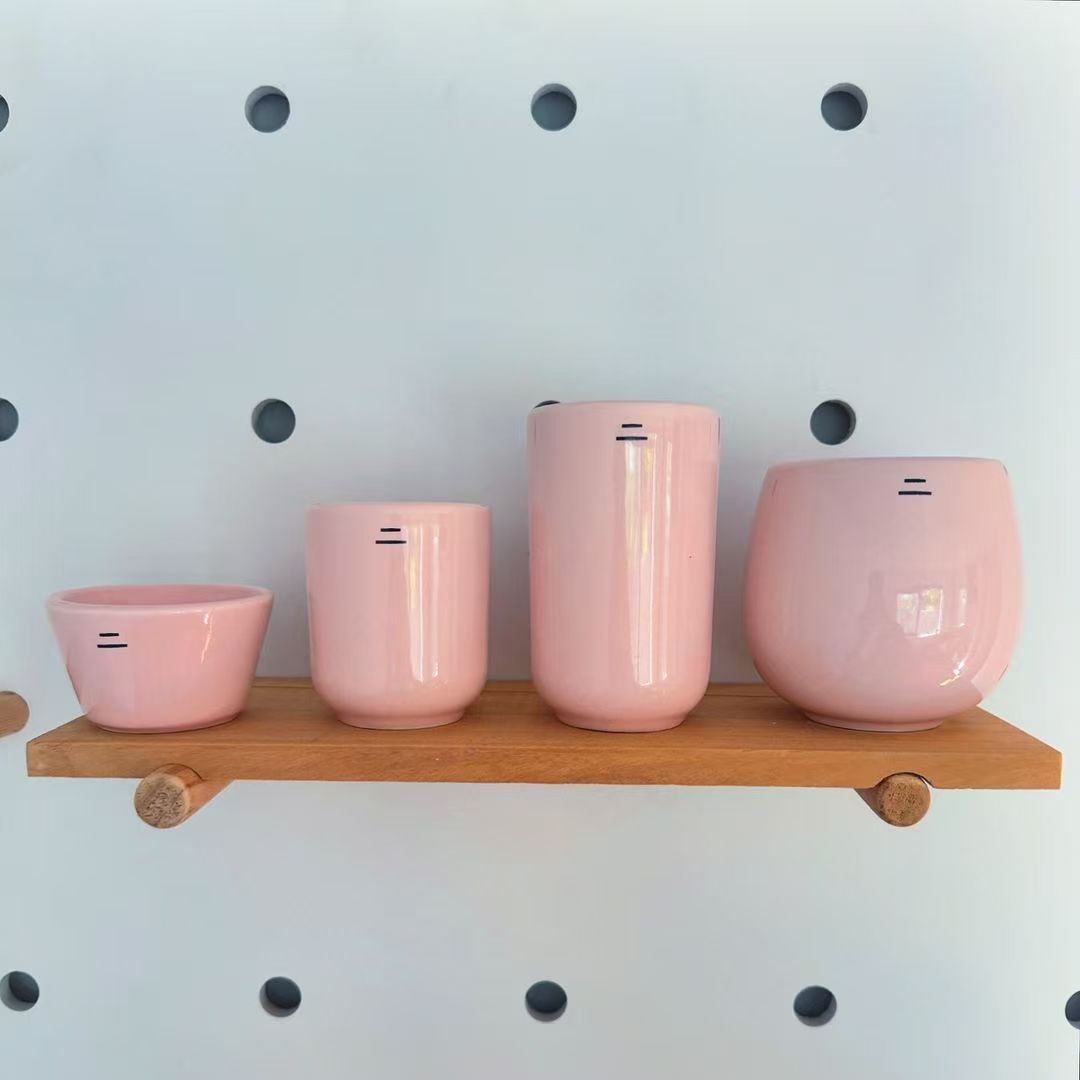
Ni Wares
Ni Wares emerged from an inspired moment when ONA salesman Hany Ezzat prepared for the Australian Coffee Brewing Competition. Guided by Charles Spence’s gastronomic physics, Hany and Madeline Cardone experimented with a wide range of cups for espresso and pour-over brewing. The brand’s Bouba cups were chosen by the 2024 Switzerland Brewers Cup champion Suki, the 2024 Thailand Brewers Cup champion Wasin Kusakabe, and many other competitors.

MK Studio

Way Cup
Experiments have shown that pink coffee cups amplify the perception of sweetness and floral aroma. Wataru Iidaka selected pink tasting cups from the Copenhagen handmade brand MK Studio. Martin Wölfl also favors pink cups, showcasing his pink and white 2-WAY CUP from a Hong Kong brand created by Gary. This innovative cup, highlighted as the final innovation in his presentation, features different colors on each side and different mouth shapes, altering where the coffee lands on the taste buds. The white side enhances aroma appreciation, while the pink side accentuates fruity flavors within the medium to low temperature range.
Clever Blends of Coffee Beans and Dairy for More Fun
Delving into the recipes of contestants from the 2024WBC and 2024WBrC reveals some intriguing findings: Colombian beans have emerged as dominant, and blended beans are making strides in the brewing world. Additionally, plant-based milk has assumed a significant supporting role in dairy blending.

Mikael Jasin in Colombia El Diviso
For instance, Mikael Jasin (Indonesia) blended beans from Finca El Diviso in Colombia with Ethiopian originals; Takayuki Ishitani (Japan) selected Geisha from Finca Deborah, Panama, and Colombian Caturra; Tom Hutchins (Australia) combined Colombian Cerro Azul Geisha with Colombian El Diviso Ombligon to create new vanilla flavors…
Processes like heat shock, yeast fermentation, and lactobacillus fermentation for raw beans have transformed coffee flavors into a “kaleidoscope” with clearer tastes, heightened sweetness, and more impressive aromas. While we embrace these changes, we also believe that traditional processes will always remain our “first love,” reminding us not to forget our original aspirations.

Wataru Lidaka’s origin tour
If there were a blending contest in brewing competitions, Wataru Iidaka would likely be the master blender. He layered 4 grams of Panama La Esmeralda’s honey-treated Geisha for an elegant floral flavor on top, followed by 5 grams of Panama Janson Manor’s natural Geisha for candy-like sweetness in the middle, and finished with 6 grams of Panama Finca Nuguo’s natural Geisha for an acidic texture—a Panamanian coffee all-star lineup! Blending appears to be a shortcut, but in reality, it introduces more variables—a new challenge for contestants.
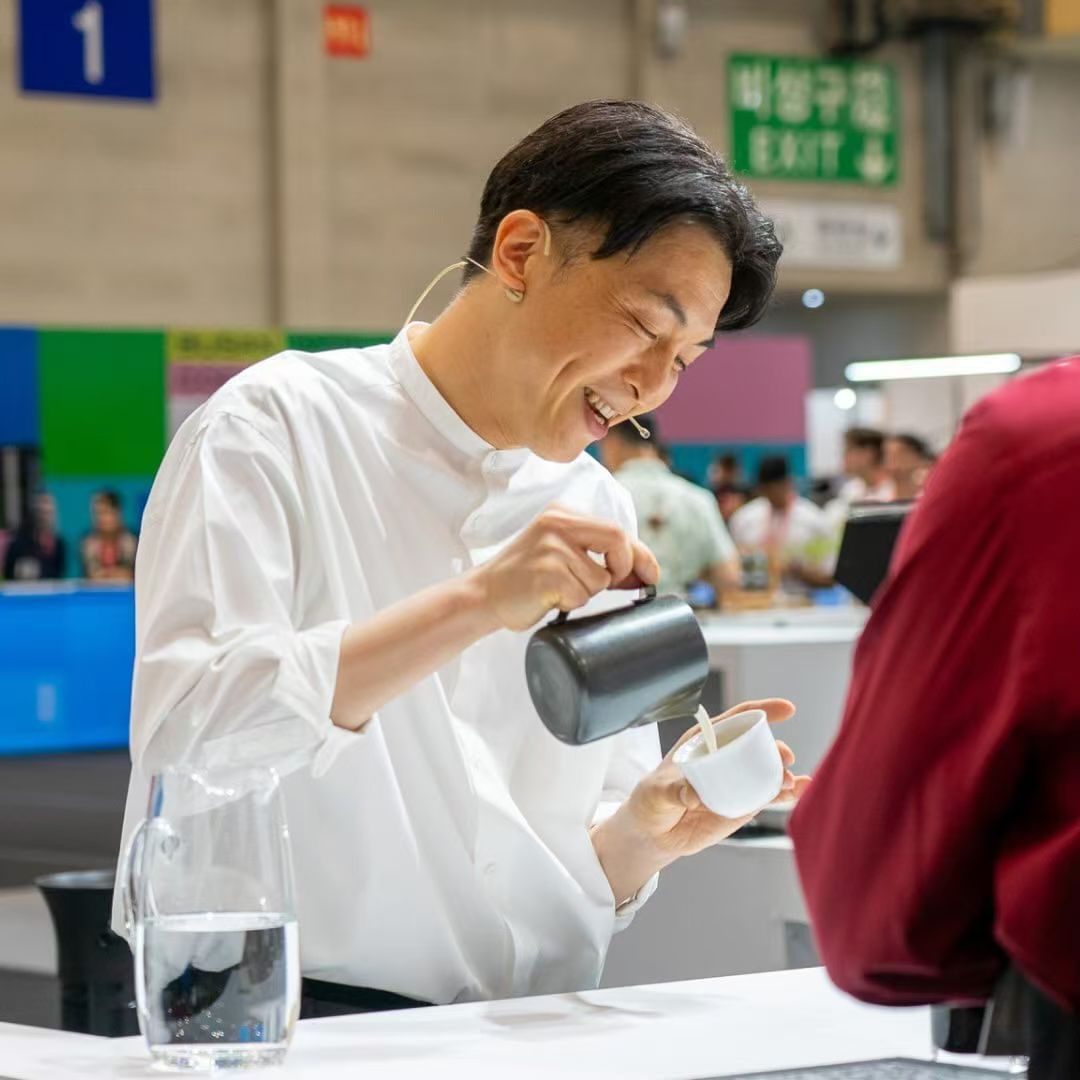
Takayuki Ishitani
Beyond beans, there’s also milk to consider for blending. Mikael Jasin achieved harmony with a blend of 60% dairy milk, 20% cashew milk, and 20% oat milk. Jack Simpson added sweetness with 10% freeze-dried coconut milk. Takayuki Ishitani used rice milk and lactose-free milk to enhance smoothness and sweetness. Honoka Kawashima balanced milk’s saltiness with 10% almond milk, resulting in a raisin finish.
As we immersed ourselves in the intense competitions and journeyed through the presentations, a broader and more colorful picture of coffee unfolded before our eyes. Every change, from seed to cup, naturally answers one question: why do we need coffee competitions?

Sasa’s social media post hit the mark. Competitions aren’t just about showcasing baristas’ skills and innovations; they create bonds among producers, roasters, and baristas, driving the entire industry forward.
We also heard heartwarming responses.

Tom Hutchins shared that coffee and music are his twin passions in life. He likened a coffee team to a band: when the stage is set, “now I’m going to play this song for every passionate coffee lover in the world.”
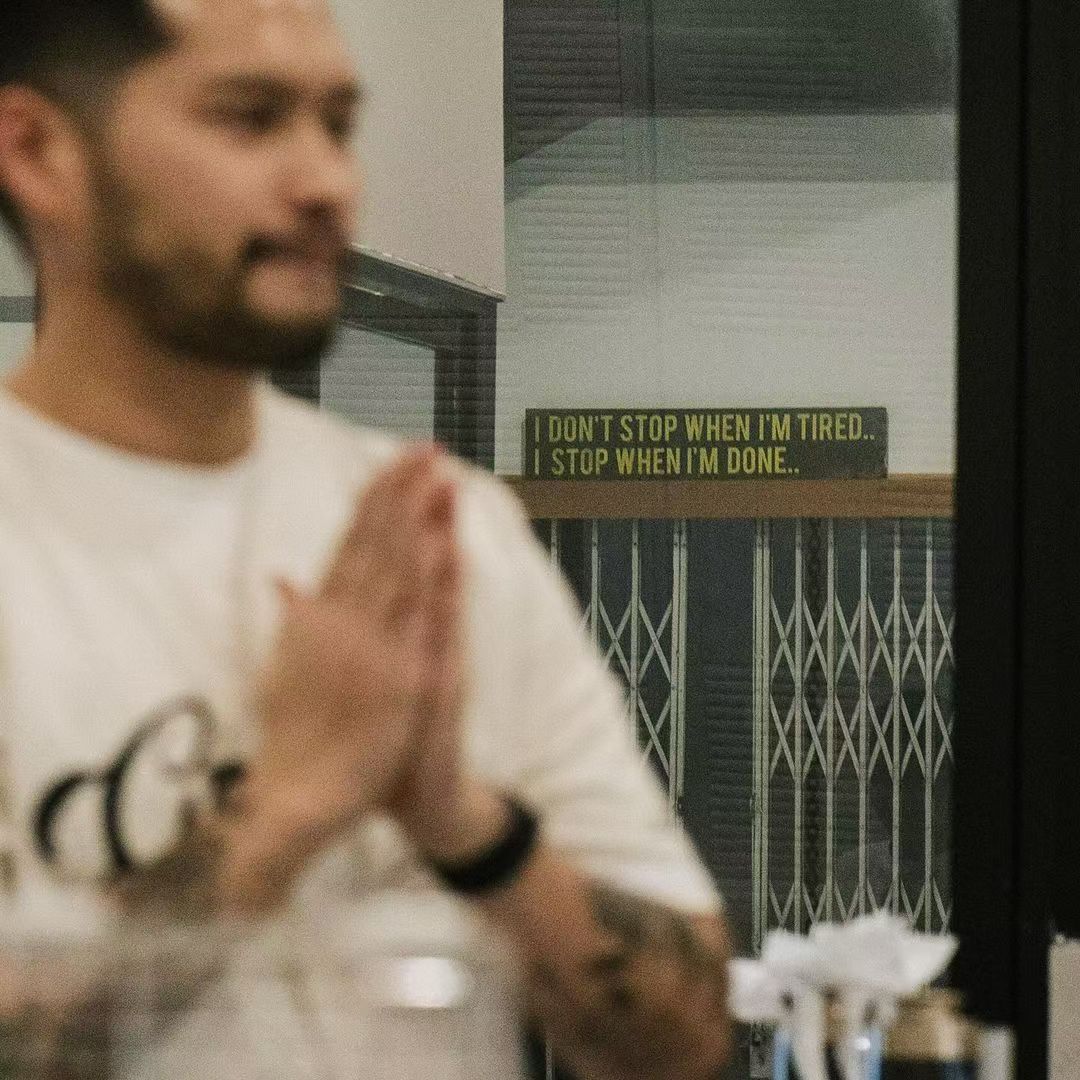
Mikael Jasin guided judges to connect with mind, body, and soul through his unique positive meditation practice and three cups of coffee each. We’re not just entering the world of coffee but life itself.
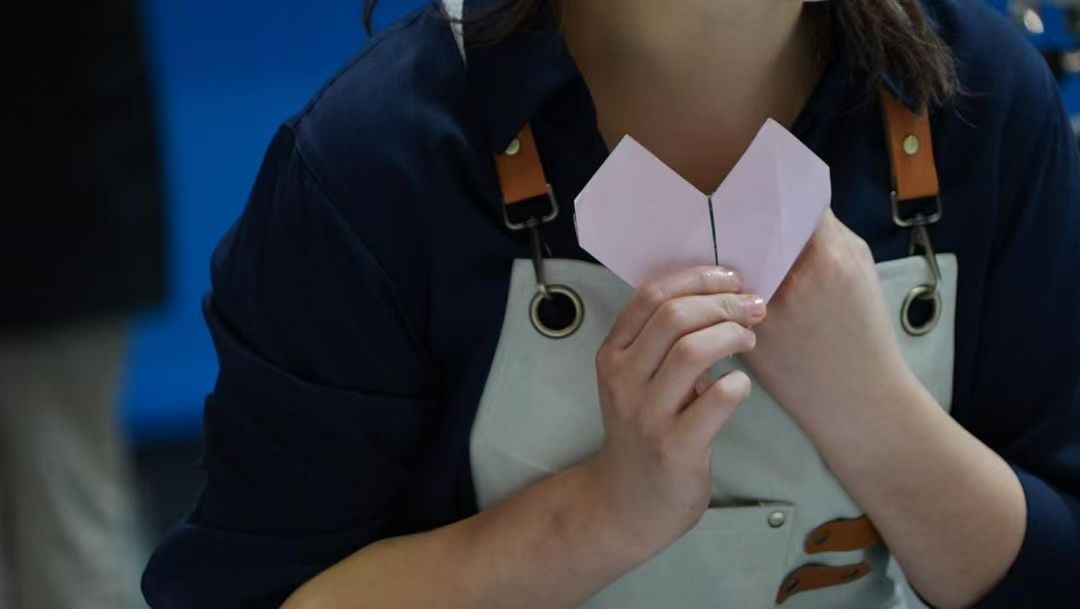
Honoka Kawashima took us back to childhood, starting the coffee journey with a piece of paper, unfolding the complex world of coffee flavors like a pure origami game.
Lastly, let’s conclude this season review with a quote from Ryan Wibawa.
“Different regions, varieties, and processes give each coffee its unique beauty. This cup will demonstrate how the diversity of coffee can harmonize together, just like everyone gathered here.”









NO COMMENT